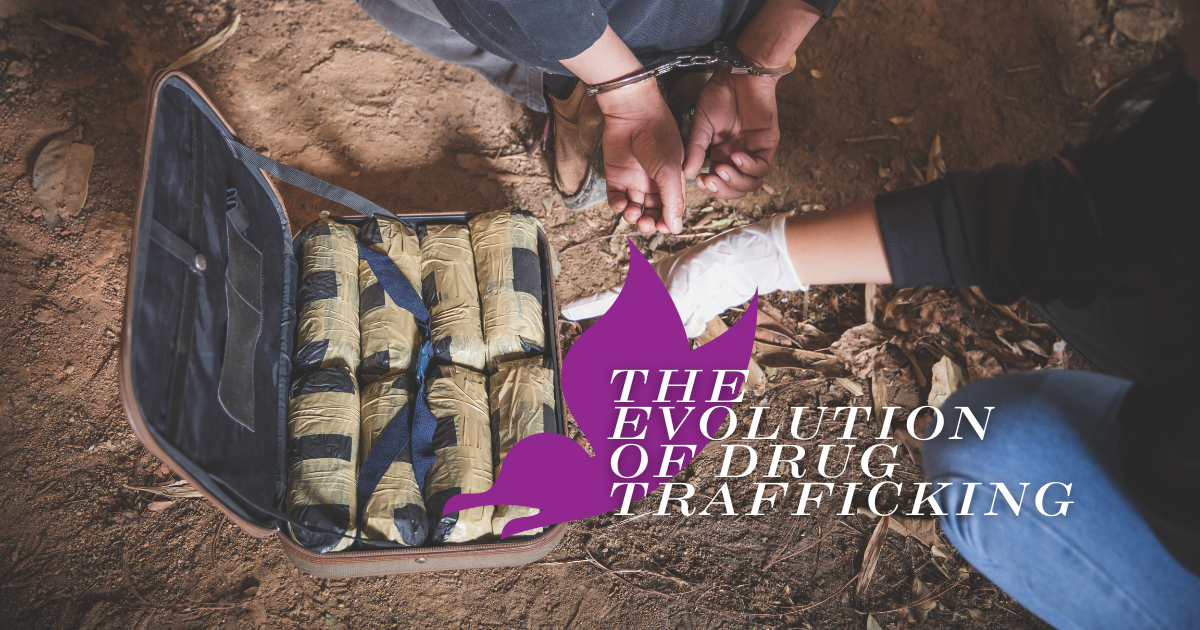Federal and state regulation of drugs and drug enforcement in the United States has its origins in the late 19th and early 20th centuries. Our current understanding of addiction and narcotics policies has evolved considerably over the last 200 years, but as new synthetic drugs continue to flood the market, we have to remain amenable to new methods of treatment and regulation.
Drug Enforcement History
Amazingly enough, prior to the 20th century, a large number of illicit substances were widely available for purchase in drug stories across America, including cocaine, opium, heroin, and cannabis. These unregulated substances remained popular through the 19th century and no federal agencies were in charge of regulation; doctors typically prescribed cocaine and morphine to patients with relative ease. This began to change towards the end of the 19th century with growing public concern over the societal ramifications.
Although California is currently labeled one of the most liberal and progressive states in the nation, it was the first state to originally pass drug enforcement laws in the United States. Ironically enough, San Francisco passed the first enforcement measures in 1875, effectively banning opium dens. The law was writ largely with racist undertones, and the San Francisco Chronicle reported that the law was enacted after supervisors had learned of “opium smoking establishments kept by Chinese” and wished to make it an offense for “any white person to smoke in the place”. Stoked by fears of race mixing, Idaho later passed similar statutes that specifically punished white persons who kept opium dens, or that sold to other whites.
A geographic scattering of states began to pass laws banning the consumption and distribution of cocaine in the years to follow: Oregon in 1887, Montana in 1889, Colorado in 1897, and Massachusetts in 1898. These laws garnered support and were fueled by fears that white users were increasingly falling victim to these drugs due to the immoral influence of minorities such as the Chinese, African Americans, and Mexicans. In fact, many drug laws that followed, including those passed in recent years, were carried by a tide of racist undercurrents. Headlines during the time were not infrequently racist, claiming that drugs turned Mexicans and African Americans into crazed, physically strengthened criminals.
Harrison Narcotics Act of 1914 / Marijuana Tax Act of 1937
The first federal drug prohibition began with the Harrison Narcotics Tax Act of 1914. Under the Harrison Act, distributors of cocaine and opium were required to register with the Department of the treasury and pay a special tax on all these drugs. Under this act, the Narcotic Division of the Internal Revenue Bureau was established, a precursor to the modern DEA, which worked to close down unlicensed clinics across the nation. Enforcement agents became known as “narcs”. As Prohibition kicked into full swing during the 1920’s, this power was transferred to the newly established Federal Bureau of Narcotics. The Marijuana Tax Act of 1937 was the next major federal attack against narcotics, imposing strict regulation and high taxes on the sale of marijuana. States quickly followed by making marijuana illegal across the country.
Boggs Act of 1951 / Narcotic Control Act of 1956
Continuing into the mid 20th century, the United States continued to enact legislation to stem the flow of narcotics, while adding major criminal penalties for distribution and consumption. While Nixon may have coined the “War on Drugs” term in the 70’s, it was during the 50’s the United States started imposing its most serious penalties for drug possession and distribution. The Boggs Act became the first legislation that set mandatory minimum sentences for drug convictions. The act included the death penalty for selling heroin to minors, and was passed in response to a sharp increase in narcotics arrests and violations following World War II, and was later followed by the Narcotics Control Act of 1956, which increased minimum sentences even more. First offense for possession was minimum 2 years in prison, followed by 5 years and 10 for the following offenses. Sale of narcotics carried twice the prison time. The continued debate over whether harsher penalties for drug possession and trafficking either reduce or contribute to drug-related crime and recidivism is highly contested to this day.
The Presidential COMMISSION on Narcotic and Drug Abuse
Opposition to harsher penalties first began arising in the 1960’s on the wave of civil rights and gender equality marches. Organizations like the American Bar Association pushed for less severe penalties and greater federal funding for treatment. The 1963 Presidential Commission on Narcotic and Drug Abuse advocated that more funds were needed to research possible treatment options, that less strict drug punishments would be beneficial, and that the FBN needed to be dismantled. At this time, emphasis was placed more on treatment than punishment, but harsh penalties would continue to exist and even escalate under the ensuing Nixon Administration.
The Bureau of Drug Abuse and Control was founded within the Department of Health, Education, and Welfare. Amd focused on researching and providing adequate treatment for addicts. However, enforcement federal drug enforcement personnel were also increased during this time.
The War on Drugs / Controlled Substances Act
Nixon is infamous for enacting and pushing the “War on Drugs” approach that has been the basis for much of the United States drug policies. In 1970, Congress passed the Controlled Substances Act, which established the framework through which the government regulates the production, possession, and distribution of all controlled substances. It also established the framework for levels of narcotics according to five levels known as “schedules”.
Schedule I
These substances are defined by the federal government as drugs with no accepted medical use, and high potential for abuse. These include:
- Heroin
- LSD (Lysergic Acid Diethylamide)
- Marijuana (Cannabis)
- Ecstasy (Methylenedioxymethamphetamine)
- Quaaludes (Methaqualone)
- Peyote
Schedule II
Schedule II substances are defined as drugs with a high potential for abuse, though less than Schedule I, with use potentially leading to psychological or physical dependence. These include:
- Cocaine
- Methamphetamine
- Methadone
- Hydromorphone
- Meperudine
- Oxycodone
- Fentanyl
- Dexedrine
- Adderall
- Ritalin
Schedule III
Schedule III substances are defined as drugs with moderate to low potential for physical and psychological dependence. These include:
- Vicodin
- Ketamine
- Steroids
- Testosterone
- Products containing less than 90 mg of codeine per unit
Schedule IV
These substances are defined as having a low potential for abuse and low risk of dependence, and include:
- Xanax
- Soma
- Darvon
- Darvocet
- Valium
- Ativan
- Talwin
- Ambien
Schedule V
Defined as substances with lower potential for abuse than other schedules. These include:
- Robitussin
- Lomotil
- Motofen
- Lyrica
- Parepectolin
In July of 1973, Nixon authorized the creation of the DEA, the Drug Enforcement Agency, to enforce the Controlled Substances Act. The DEA was intended to be the single focal point for coordinating federal drug enforcement efforts between the State, local authorities, and foreign police forces. All aspects of regulatory compliance, as well as criminal provisions for unlawful drug possession, would be administered through the DEA.
Crack Cocaine and Reagan
The rising popularity of cocaine and its cheaper cousin, “crack” lead to a renewed public panic and concern over American drug consumption. Following attempts by Jimmy Carter to roll back mandatory sentencing for drug possession and decriminalization of marijuana, Reagan took a staunch approach to drug enforcement that would wind up incarcerating hundreds of thousands of Americans. Between 1980 and 1986, federal drug convictions more than doubled, primarily for trafficking, importation, and distribution, with about less than 20% relating to possession.
In 1984, Congress passed the Comprehensive Crime Control Act of 1984, enhancing penalties for drug enforcement violations, and introducing criminal forfeiture provisions for specific violations, allowing the government to seize forfeited property and use for state, local and federal enforcement of federal drug laws. The Anti-Drug Abuse Act of 1986 established more criminal penalties for possession, including the now infamous crack vs. cocaine distinction that required 100 times more powder cocaine than crack cocaine to trigger the same penalties. With crack being an epidemic in poorer communities, this law unfairly imprisoned more low income citizens. Federal sentencing for drug charges has been largely influenced by these laws, and approximately 50% of the federal inmate population is incarcerated for drug offenses.
Rise of Methamphetamine and Ecstasy
As cocaine’s popularity began to wane towards the end of the 80’s, thanks in part to the highly publicized cartel wars occurring in South America, methamphetamine abuse began to rise. Because it could be largely created with legally purchased items, small-scale meth labs began to appear in homes and private locations across the nation. The Clinton Administration dedicated special task forces to address the rise in methamphetamine, specifically in the southwest where the abuse was more rampant. Congress even included special provisions designed to address the dangers revolving around the production of meth, including enhanced criminal penalties and more strict federal regulation of items such as pseudoephedrine.
MDMA’s (methylenedioxy-methamphetamine) growing popularity in the 1990’s coincided with a rising nightclub and rave scene that dubbed the drug “molly”. The Illicit Drug Anti-Proliferation Act of 2003 amended the Controlled Substances Act to more directly target venue owners who knowingly hosted MDMA users or encouraged use. To crack down further, the substance was labeled as a Schedule II narcotic.
Heroin and the Prescription Drug Epidemic
The last two decades have seen a rise in prescription opioid and heroin abuse. In fact, the number of heroin users increased by approximately 300% between 2004 and 2013. This rise can be attributed to the boom and ensuing law enforcement crackdown in prescription opioids that has run rampant through the country. Heroin cheapness and high availability make it an easier alternative to those hooked on opioids. In response to prescription drug and heroin abuse, the DEA has doubled its number of Tactical Diversion Squads, units that combine local, state, and federal law enforcement to specifically target controlled pharmaceuticals and heroin.
In 2016, almost 64,000 people died from overdose on drugs, with opioids accounting for nearly two thirds of the damage. Since 1999, deaths related to opioid abuse have nearly quadrupled, while the number of deaths specifically tied to fentanyl and new synthetic opioids has more than doubled in the last two years alone. These deaths now surpass the all-time highs for annual deaths caused by motor vehicle collisions, HIV, and guns. It’s safe to say that the opioid crisis constitutes a serious public health crisis.
The severity of the opioid and heroin crisis can be mapped to a very specific pattern of spreading. Before the 2000’s, opioids were less widely used, but began being abused in the southwestern United States. From 2000 to 2015, usage exploded, likely owing to a growth in manufacturers along with doctors prescribing it. The areas most prominently affected are the Southwest, Appalachian, and New England regions of the country.
We also know that in the 1960’s roughly 4 out of 5 heroin addicts began with heroin, but by 2000, 3 out of 4 heroin addicts began with prescription opioids. We know that the only way these drugs could be entering the streets is through illegally diverting or through over prescribing. Studies have shown that the majority of people who have abused a pain reliever in 2016 gained access to it through a friend or relative, with the second most common reason being prescribed through a doctor. What this tells us is that there is an over saturation problem, with too many pills being left available after a doctor has prescribed them.
Drug Enforcement Today
Currently, the U.S. government spends roughly the same amount of tax dollars on treatment and law enforcement. In fiscal year 2016, treatment comprised roughly 36.6% of the total budget, while domestic law enforcement comprised roughly 34.5%. Prevention took up only 5.5%, and is made up of educational and awareness programs across the country. The Office of National Drug Control Policy divides the total federal budget between demand reduction and supply reduction. Demand reduction comprises roughly 42.2% of the total budget and would include treatment and prevention efforts, while supply reduction comprises roughly 57.8% and would include domestic law enforcement, interdiction, and international enforcement.
Next Steps
At Landmark Recovery, we advocate for both treatment and law/drug enforcement policies that are evidence based and prioritize treatment over punishment. Overcoming drug and alcohol addiction is a tough and enduring process. With the support of treatment specialists at qualified drug and alcohol treatment centers, the process is easier.

Choose Recovery Over Addiction
We're here 24/7 to help you get the care you need to live life on your terms, without drugs or alcohol. Talk to our recovery specialists today and learn about our integrated treatment programs.




